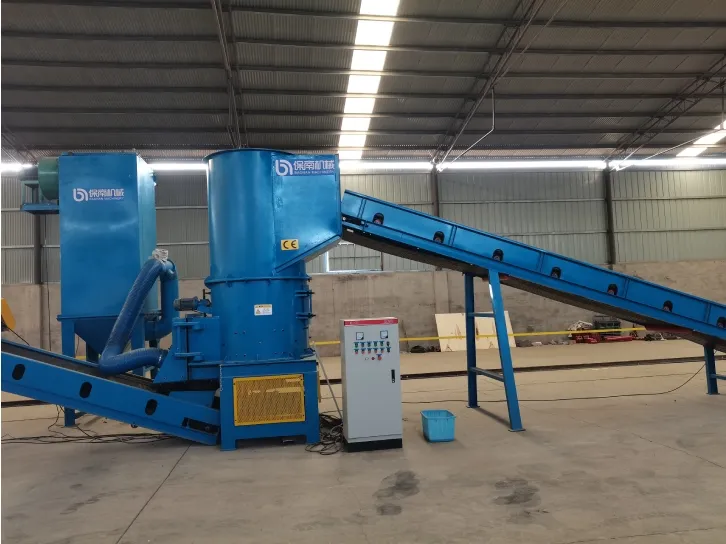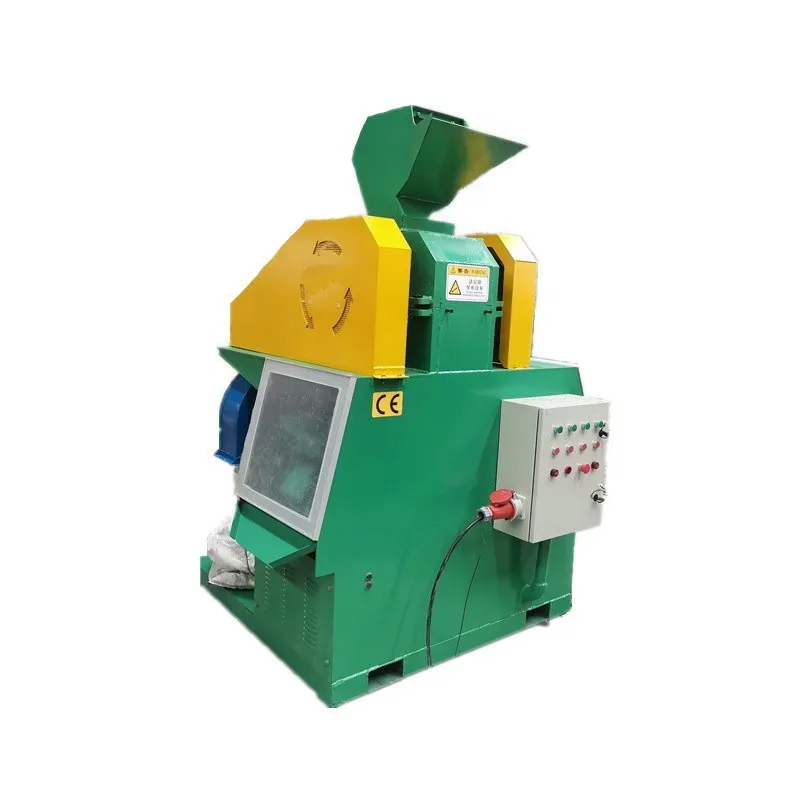Eddy Current Recycling Revolutionizing Waste Management and Material Recovery

In the realm of modern waste management and recycling, few technologies have garnered as much attention as eddy current recycling. This innovative process is shaping the way industries approach metal recovery, combining cutting-edge engineering and environmental stewardship. Here, we delve into the experience, expertise, authoritativeness, and trustworthiness that eddy current recycling brings into the products we rely on and the broader recycling ecosystem.
Eddy current recycling harnesses the power of electromagnetic fields to efficiently separate non-ferrous metals from waste streams. This technique is transformative, especially when used in conjunction with traditional recycling methods. Its proficiency lies in its ability to recover valuable metals such as aluminum and copper from materials where they would otherwise remain entwined with non-merit substances.

The experience of employing eddy current technology is enlightening for waste management enterprises and recycling facilities. This process is not just an addition to recycling procedures but a significant upgrade that ensures higher recovery rates. Companies with experience in implementing this technology often witness up to a 95% recovery rate of non-ferrous metals, yielding a substantial increase in revenue and reduction in waste. The integration of eddy current systems brings about efficiencies that reduce the dependency on manual sorting, thereby decreasing labor costs and human error.
Expertise in eddy current recycling is characterized by a detailed understanding of electromagnetic coil design, rotor speed optimization, and conveyor system integration. An expertly calibrated eddy current system considers variations in particle size and material type to maximize separation efficiency. A multidisciplinary approach often involving engineers, technicians, and environmental scientists ensures that the system operates at peak performance, capable of adapting to the evolving composition of waste inputs. As such, eddy current systems are custom-designed to meet the specific needs of different recycling facilities and material types, whether dealing with automotive shredder residue or electronic waste.
eddy current recycling
Authoritativeness in the field of eddy current recycling is established by leaders in engineering and manufacturing who have pioneered advances in the technology. These companies invest heavily in research and development to push the boundaries of what eddy current systems can achieve. They collaborate with academic institutions and industry bodies to lead studies that confirm the efficacy and environmental benefits of eddy current systems. Technical papers and industry guidelines authored by these authorities provide invaluable insights into best practices and standards for implementing eddy current recycling technology.
Trustworthiness is paramount in the adoption of eddy current recycling as businesses seek reliable solutions in their sustainability strategies. The technology itself is a testament to reliability; it is non-destructive, generates no waste, and operates silently, minimizing its environmental footprint. Facilities that employ eddy current recycling frequently highlight improved compliance with environmental regulations and certifications, such as ISO 14001, which testify to their commitment to sustainable operations.
The products of eddy current recycling are not restricted to monetary value alone. The social and environmental impacts underscore the technology's broader benefits. By recovering key metals efficiently, eddy current recycling reduces the need for virgin metal mining, conserving natural resources, and reducing greenhouse gas emissions associated with extraction and processing. Furthermore, the reduction in landfill use and the consequential decrease in soil and water contamination align with global commitments to environmental protection.
Moreover, consumers today demand products that have a minimal environmental impact, and eddy current recycling aligns product manufacturing with these expectations. By integrating materials recovered through eddy current systems, manufacturers can boost their eco-friendly credentials, enhancing brand loyalty and market competitiveness.
Eddy current recycling stands as a pillar of sustainable waste management, offering a comprehensive solution that combines efficiency, expertise, authority, and reliability. As industries continue to grapple with the increasing complexity and volume of waste, eddy current recycling offers a beacon of innovation that drives both environmental and economic benefits forward. This steadfast technology ensures that materials once deemed waste are efficiently reintegrated back into production cycles, heralding a new era of sustainable industry practices.


